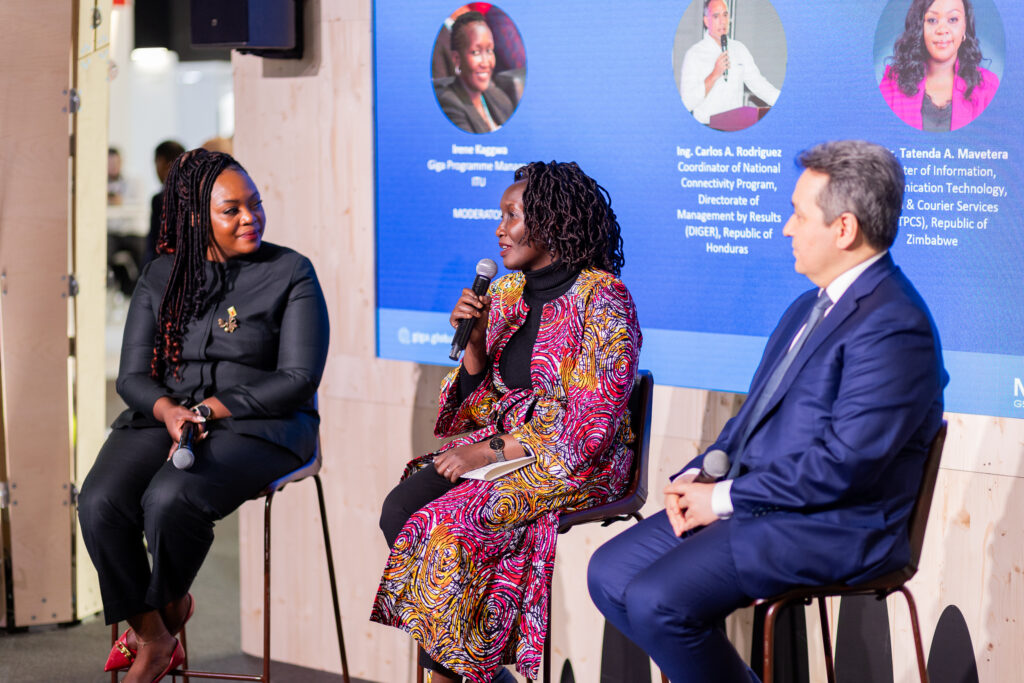Zimbabwe and Uzbekistan represent standout examples from two different continents in the quest to achieve school connectivity amid competing national priorities.
In both countries children under 15 comprise roughly 40 per cent of the population, and those under 25 account for more than 60 per cent. This data signals that future economic growth in the two is closely linked to school connectivity and providing young people with the digital skills needed to thrive in a rapidly evolving economy.
That was the key takeaway from the recent Giga Session at the Mobile World Congress in Barcelona. The event featured a panel, called “Scaling Innovation for Universal School Connectivity,” moderated by Irene Kaggwa, Giga Programme Manager, ITU.
A partnership between the International Telecommunication Union (ITU) and UNICEF, Giga’s mission is to support governments around the world to connect their schools to the internet. It is already working with 34 countries and territories, including Zimbabwe and Uzbekistan.
The ICT ministers of the two countries — Zimbabwe’s Hon. Tatenda Mavetera and Uzbekistan’s Hon. Sherzod Shermatov — highlighted progress their governments have made to date in school connectivity and what is required going forward.
According to Hon. Mavetera, Zimbabwe has connected 3,500 out of the country’s 7,000 schools. She said strong government support, buttressed by the use of the Universal Service Fund (USF), had led the way. (USF are typically financed by collections from telecommunication operators and used towards ICT infrastructure development gaps in unserved and underserved areas.)
Through UNICEF, Giga supported the government by mapping school locations in Zimbabwe, and is also assisting with solar and alternative energy projects to power school connectivity. ITU, through its Telecommunication Development Bureau (BDT), will continue a broadband infrastructure mapping project to help the government select the highest-quality and most cost-effective connectivity scenario for the remaining 3,500 schools.
“If you want to prepare for the future we better start now, equipping our students today and capacitating our teachers,” said Mavetera. “Our hope is to connect each and every school, leaving no one and no place behind.”
IT Outsourcing Hub
Political commitment is also at the core of Uzbekistan’s success. Backed by USF, the country has deployed high-speed fiber-optic cable to connect all 10,000 schools, with an eye towards the economic goal of becoming an IT outsourcing hub.
“Rather than let young people leave the country to find jobs elsewhere, we are trying to focus on bringing those remote jobs to Uzbekistan,” Hon. Shermatov said.
To that end, the government provides subsidies for students to learn the skill sets required by IT employers, a strategy that is succeeding.
In 2017, there were fewer than 10 foreign IT companies working in Uzbekistan, but now over 30 new companies open offices each month,” Hon. Shermatov noted, bringing the total to over 1,000.
In Uzbekistan, UNICEF provided the mapping of schools and the real-time monitoring of their internet connectivity to ensure quality of service. Of the 10,000 schools, monitoring is available for 2.4k schools, with plans to extend it to all schools in the future.
Hon. Mavetera, like her counterpart in Uzbekistan, said Giga’s role is fundamental, but must dovetail with other efforts to achieve a sustainable digital transformation of education.
“It’s about power, hardware, skills and partnerships,” she said, referring to the necessity of electrification, devices, teacher capacity development and partnerships, whether financial or in-kind, to make it all happen.
“I think our system can be applied elsewhere in Africa. We want Zimbabwe to be a hub for the Giga project in Africa so we can lead in school connectivity, especially with less developed countries,” she said
Kaggwa observed that both Zimbabwe and Uzbekistan are certainly on the right track, steered by strong leadership as demonstrated by the two ministers.
“These two countries have done a commendable job in terms of what can be done and how it can be done, and we look forward to our continued collaboration,” she said.

